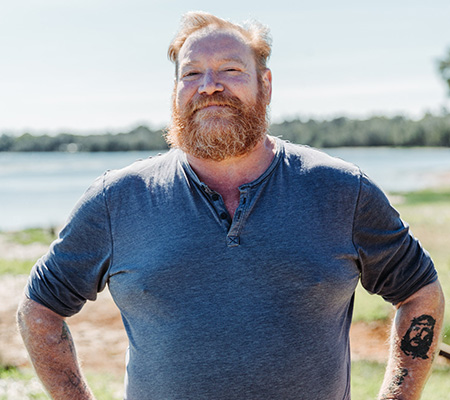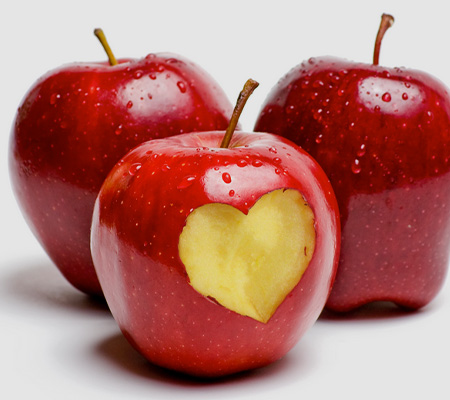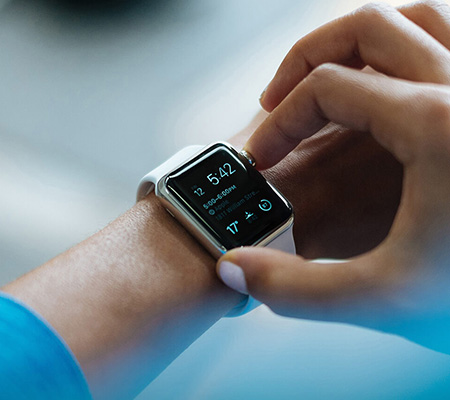Merchandise | Online fundraising | Fueling for sporting events | Warming up for sporting events | Make an enquiry
Taking part in a local, interstate or overseas marathon, fun run, triathlon, swim, cycle or sporting event is not only a fun way to keep healthy and reduce your bowel cancer risk, it also provides a great opportunity to raise much needed funds for Bowel Cancer Australia.
Supporting Bowel Cancer Australia in a sporting event is as simple as:
Supporting Bowel Cancer Australia in a sporting event is as simple as:
- Choosing how you'd like to take part - as a personal challenge, in a team with friends and family, or in a work team with colleagues.
- Registering for the sporting event that interests you most.
- Creating an online fundraising page.
- Spreading the word and asking everyone you know to sponsor you.
Looking for a sporting event to take part in? Check out our Events & Activities calendar.
Please contact us on 02 9735 3650 or send us an email about your sporting event plans using the enquiry form below.
Please contact us on 02 9735 3650 or send us an email about your sporting event plans using the enquiry form below.
Running singlets and other Bowel Cancer Australia merchandise (including awareness ribbons and our fun bum shorts!) can be made available for sporting events. Further details of these items can be found on Bowel Cancer Australia's online shop.
Using the Go Fundraise online fundraising platform you can create your own fundraising webpage in just minutes and invite your friends and family to make an online donation to Bowel Cancer Australia in support of your fundraiser.
Each fundraising page has its own unique website link, which you can include in your promotional posters/flyers, send via email or put on your social networking sites (e.g. Facebook & Twitter), inviting everyone to donate.
Every online donation is recorded on your fundraising page along with any special messages of support from your friends and family.

| Fueling for sporting events
Eating well before you exercise can make a world of difference. Bowel Cancer Australia nutritionist, Teresa Mitchell-Paterson has put together some dietary tips to help you prepare for your charity marathon, half-marathon, fun run or sporting event.
There's nothing worse than hitting a wall during a sporting event or big run. Your legs become heavy, you feel dizzy and lightheaded, and suddenly you start feeling more tired than usual.
Bowel Cancer Australia nutritionist, Teresa Mitchell-Paterson says eating well before you exercise can make a world of difference.
"When you exercise, carbohydrates from food and muscle tissue break down into sugar to feed the muscles and the brain. If you eat adequate carbohydrates after exercising this sugar is stored back into the muscle, which stops the body from using muscle to fuel itself," she said.
So whether you're training for your first marathon or you've just registered for a fun run, make sure you last the distance by fueling your body with the right foods.
Bear in mind, there are a number of factors affecting your particular carbohydrate needs, such as the type and duration of exercise, training background, weather, performance goals and so on. Therefore the following advice is a guide only.
For individual advice, speak to your GP, or expert sports nutritionist or dietician.
Fueling for activities less than 90 minutes
On average, most people consume enough carbohydrate to fuel events that are an hour long or under 90 minutes.
A small healthy breakfast three to four hours before the event containing some carbohydrate and protein, with a snack after the event, should do the trick.
However, if you find you're constantly exhausted during or after medium intensity activities, like Pilates, yoga, light to medium jogging or walking, you may be in need of a glycemic boost. Try one of the below high glycemic foods an hour or two before your next workout.
High glycemic foods include:
On average, most people consume enough carbohydrate to fuel events that are an hour long or under 90 minutes.
A small healthy breakfast three to four hours before the event containing some carbohydrate and protein, with a snack after the event, should do the trick.
However, if you find you're constantly exhausted during or after medium intensity activities, like Pilates, yoga, light to medium jogging or walking, you may be in need of a glycemic boost. Try one of the below high glycemic foods an hour or two before your next workout.
High glycemic foods include:
- Apple and fruit sauces in natural juice or in syrup
- Melon
- Grapes
- Fruit juice
- Honey, jam, syrups
- Chocolate
- Mashed potato, no skin
- Boiled rice
- Noodles
- Lebanese bread
- Pita pockets
- Crumpets
- Filled fruit biscuits
- Plain sweet biscuits
- Gluten free rice bread
- Rice cakes and honey
- Fruit roll ups
- Corn tortilla
- Rice bubbles, cornflakes, instant oats and low fibre cereals with a little skim milk
- Glucose lollies
- Sports drinks or gels
As a general guide, avoid high fat carbohydrate meals before any exercise regime (chips and anything deep fried) and stick to smaller portions before your workout.
Half marathons or activites up to 2-3 hours
For longer duration activities, start carbohydrate loading around 2-3 days before the big event.
To do this, work out your average daily calorie intake and swap some protein or fat for carbohydrate.
A guide for carb loading:
For longer duration activities, start carbohydrate loading around 2-3 days before the big event.
To do this, work out your average daily calorie intake and swap some protein or fat for carbohydrate.
A guide for carb loading:
- Light intensity low duration half an hour a day 3-5g/kg/day
- Moderate intensity moderate duration an hour a day 5-7g/kg/day
- Endurance exercise one to three hours a day 6-10g/kg/day
- Extreme sports endurance more than 4 hours a day 8-12g/kg/day
Also try to have the bigger meal at lunch not dinner so you have enough time to digest properly before race day.
Make sure to pay particular attention to low and high glycemic foods. For example, before race day prioritise low glycemic foods for lunch and dinner.
Low glycemic foods enter the blood stream slowly and release sugar slowly thereby sustaining energy for a longer period. This is largely to do with their fibre content and the type of sugar in the food. This makes them suitable during pre-event diets but unsuitable if you are eating close to an event, say under two hours.
Make sure to pay particular attention to low and high glycemic foods. For example, before race day prioritise low glycemic foods for lunch and dinner.
Low glycemic foods enter the blood stream slowly and release sugar slowly thereby sustaining energy for a longer period. This is largely to do with their fibre content and the type of sugar in the food. This makes them suitable during pre-event diets but unsuitable if you are eating close to an event, say under two hours.
If consuming food under two hours before an event they may cause a stomach ache. This is because they take a while to digest and a lot of your blood is focused on achieving this task, therefore diverting blood away from your muscles.
Sports drinks and gels are good if fueling closer to the event and if you need to take on more carbohydrate as you are running in longer duration exercise.
Low glycemic foods include:
Sports drinks and gels are good if fueling closer to the event and if you need to take on more carbohydrate as you are running in longer duration exercise.
Low glycemic foods include:
- Nuts and seeds
- Whole grains
- Whole meal bread and pasta
- Fruit with skin on
- Most vegetables with skin on
- Animal proteins
- Eggs
- Cheese and full fat milks, and yoghurts
- Beans and legumes
- Tofu, tempeh
- Gluten free Low GI bread
On race day, avoid heavy breakfast options such as high fibre oats, nuts and seeds or egg and whole meal breads.
It's best to eat high glycemic foods or a combination of high and low glycemic foods before exercise. Stop eating low glycemic foods at least 3 hours before a race or consume high glycemic foods if the event is 2 hours away.
A good way to test if you are consuming enough carbohydrates is to do some trial runs and see if you maintain your energy – if not consume more.
It's best to eat high glycemic foods or a combination of high and low glycemic foods before exercise. Stop eating low glycemic foods at least 3 hours before a race or consume high glycemic foods if the event is 2 hours away.
A good way to test if you are consuming enough carbohydrates is to do some trial runs and see if you maintain your energy – if not consume more.
Marathons or activites up to 3-5 hours
Start carbohydrate loading 6-7 days before the event.
On race day, avoid heavy low glycemic breakfasts such as high fibre oats, nuts and seeds or egg and whole meal breads.
A breakfast low in fibre and high glycemic index will ensure faster absorption and less stomach discomfort. See the high GI food list.
Food and drink suggestions
2-4 hours to go:
Start carbohydrate loading 6-7 days before the event.
On race day, avoid heavy low glycemic breakfasts such as high fibre oats, nuts and seeds or egg and whole meal breads.
A breakfast low in fibre and high glycemic index will ensure faster absorption and less stomach discomfort. See the high GI food list.
Food and drink suggestions
2-4 hours to go:
- Baked potato with skin on and baked beans or low fat cottage cheese/ricotta
- White rice or plain pasta with a low fat (tomato or capsicum) pasta sauce
- Sandwich white or whole meal (not seeded or multigrain) a little meat or vegetarian protein (25 grams) and a little lettuc
- Chicken or fish with noodles and light vegetables such as bok choy
- Low fat, fruit or plain yoghurt with fruit salad
- Crumpets or English muffins with jam/honey plus blended fruit smoothie
- Cottage cheese on rice cakes with a glass of low fat milk
- Toast with jam, honey or rice syrup and a sport drink
- Light high GI breakfast cereal with low-fat milk topped with fruit in its own juice, in a stub, stewed or tinned
- Commercial sports bar, Power Protein drink
- Cottage cheese and glass of milk
1-2 hours to go:
- Sports drink
- High GI Cereal, commercial muesli bar or rice bubble bar plus ripe banana
- Commercial sports bar, Power Protein drink, sports gels, sport drinks and water
- White sandwich with vegemite, honey or jam plus apple juice
Less than 60 minutes to go:
- Sports drink
- Sugar cordials
- Carbohydrate gels
- Specialised low fibre sport bars
- Glucose lollies
Fluids:
- Replace fluids every 15- 20 minutes whether you are thirsty or not, particularly in humid and hot weather
- If running longer than 75 minutes you could include a sport drink
- If you are running for longer than 90 minute, start refueling with sports drinks, gels (30-60 grams of carbohydrates) within the first hour of training and top up every hour.
What about natural forms of sugar – aren't they better?
Generally, yes. Lollies and sports gels are considered nutrient poor carbohydrates and should not be a major part of your diet, but they are useful during exercise. On the other hand, fructose from fruit sugars are nutrient rich but can cause a tummy upset and gastric pain, if taken just before a race. So it is best to stay with pure glucose or sugar when fueling just before or during the race.
Please note: this advice has been developed by Bowel Cancer Australia in conjunction with our resident nutritionist as a guide only and does not replace medical advice. For individual advice, speak to your GP, or sports nutritionist or dietitian.
Please note: this advice has been developed by Bowel Cancer Australia in conjunction with our resident nutritionist as a guide only and does not replace medical advice. For individual advice, speak to your GP, or sports nutritionist or dietitian.
Hollie is a bowel cancer survivor who has a passion for health which has only increased as a result of her bowel cancer diagnosis. She as put together a warm up routine to complete before a sporting event.
We want to take all precautions in injury prevention, by getting those joints loose, the body mobile by taking the body through some dynamic stretches and progressive movements.
Hollie's Warm Up Tips
My name is Hollie. I was diagnosed with Stage 4 bowel cancer when I was 24. Five years on and I am more physically active and mentally focused than ever before.
My experience with bowel cancer wasn’t easy, but I have learned a lot in the process – about myself and about my body. Although I was always a fit person, my passion for health has only increased as a result of my bowel cancer diagnosis.
Committed to growing and learning about how to best nourish and strengthen myself, I’ve spent the past year and a half studying in order to earn my Certificate 3 & 4 in fitness. Now I am a qualified Personal & Group Trainer. What I’ve learned has really helped me to feel better and I’d love to share what I know with you so that you can succeed in your health goals.
Before You Start
Before you undertake any sporting event, you'll need to take every precaution to prevent injury. To do that, you'll need to get your joints loose and your body mobile by doing some dynamic stretches and progressive movements.
As the name indicates, warm ups should focus on warming up and loosening the body, preparing the nervous system by increasing circulation, while also preparing the mind for the challenge ahead.
Dynamic stretching consists of controlled movements that will improve your muscular strength, increase your mobility and stability. Focus on plyometric drills to get the blood flowing and to increase your heart rate. It’s important to include these before your training to get the body moving in full ranges of motion and reduce the risk of injury. Avoid holding any stretches excessively and keep body movements flowing.
Before you undertake any sporting event, you'll need to take every precaution to prevent injury. To do that, you'll need to get your joints loose and your body mobile by doing some dynamic stretches and progressive movements.
As the name indicates, warm ups should focus on warming up and loosening the body, preparing the nervous system by increasing circulation, while also preparing the mind for the challenge ahead.
Dynamic stretching consists of controlled movements that will improve your muscular strength, increase your mobility and stability. Focus on plyometric drills to get the blood flowing and to increase your heart rate. It’s important to include these before your training to get the body moving in full ranges of motion and reduce the risk of injury. Avoid holding any stretches excessively and keep body movements flowing.
Below, are a few of my favorite exercises designed to get you ready for your first fun run!

Let's get physical
Let’s start by getting your body warm, mobile and ready to tackle the challenge ahead.
This movement is great for increasing hip mobility and range of motion through the hamstrings when extending.
Put your feet hip-width apart, your heels flat on the floor, create a nice neutral spine, extending out of the deep squat to stretch the hamstring and sink back down, keeping your chest and eyes up at the bottom. Repeat this movement for 10 reps, maintaining control without rushing. It will work on getting those hips mobile.

This movement is great for the hip flexors and hamstrings and gets the blood flowing to the muscles while loosening up the joints.
Grab your training buddy and hold onto each other’s shoulder, or use a supporting bar or fence (see image). Swing one leg back and forth, starting slowly as you work into that range of motion, relaxing the hip and engaging your core. I would do 10 each leg forwards and back, then 10 each leg laterally across the body.

Standing with feet hip-distance apart, start by wrapping your arms around your body as if you’re giving yourself a big hug.
Gently release, opening up your hug as if you were going to hug someone else and repeat this movement working on opening up the stretch a little more each time, repeat 15-20 repetitions.

This stretch is a great way to get the blood flowing to the quads, hamstrings, calves and glute muscles which are all going to be put to good use in this event.
Taking a step forward, keeping your chest upright and lowering your back knee towards the ground reaching for the sky with the same arm, squeezing your glute to drive you forward and repeating this movement for 10 reps on each leg.

Working through a combination of high knees and heel kicks will start to increase the heart rate.
Keeping your shoulders back and hips forward, drive off your back foot and then drive your opposite knee as high as you can. Start with 10 high knees then switch to working on kicking your heels towards the back of your body.

Keeping your shoulders back and hips forward, drive off your back foot and then drive your opposite knee as high as you can. Start with 10 high knees then switch to working on kicking your heels towards the back of your body.

The jump squat is a great stretch to finish on, as it’s a powerful way to get your leg drive and heart rate up.
Start with your feet hip-width apart, keeping your chest upright, lower your hips towards the ground, then explode up, using your arms to guide you.as you land keep your knees soft and continue the repetitions for 10-15 for 2-3 sets. As you land, keep your knees soft and continue the repetitions for 10-15 for 2-3 sets.
The Mental Warm-Up
Now that your body has warmed up, it's time to check in on your mind.
Let’s do a quick mental check to ensure you're feeling confident about tackling whatever fitness challenge you've set out for yourself.
In any sporting event, there will be many different levels of fitness. As a result, it's easy to find yourself looking around and feeling inspired or possibly intimidated.
Remind yourself that you’re here to do your best. Be proud of every step you take and set some goals to reach throughout the event. Keep your mind strong and your body will follow.
Now that your body has warmed up, it's time to check in on your mind.
Let’s do a quick mental check to ensure you're feeling confident about tackling whatever fitness challenge you've set out for yourself.
In any sporting event, there will be many different levels of fitness. As a result, it's easy to find yourself looking around and feeling inspired or possibly intimidated.
Remind yourself that you’re here to do your best. Be proud of every step you take and set some goals to reach throughout the event. Keep your mind strong and your body will follow.










